#arthur and i have similar complicated feelings on religion. the more he says the more i think. oh he’s. actually kinda like me fr.
Explore tagged Tumblr posts
Text
up to the end of part 28 spoilers:
YELLOW YOU BASTARD !!!! GET OUT OF THAT FUCKERS HEAD !!! BRO JUMPED SHIP?? IS THERE 3 VERSIONS OF THE KING RUNNING AROUND NOW?? THE KING, JOHN, AND YELLOW?? i figured i hadnt seen the last of yellow but like., that is the worst possible outcome their luck continues to be SO SO SO SHIT !!! jaw on the floor
john wtf did you deal with kayne about. i heard you, while you were sewing up arthur (hello. hello.). which is odd, because generally it’s been implied that we’re getting this story from arthur’s pov. did arthur hear that and pretend he didnt? he’s not above that sort of thing. but i dont think so. i think it’s a bending of the rules for the sake of dramatic irony. in-text that seems like the sort of thing kayne would/could change, it was taken from john’s pov not kayne’s but we.,.., dont know how powerful kayne is. more than john, definitely, for right now. more than the king, maybe. maybe i’m reading too much into it, too used to my pov being an actual presence in the narrative (thanks tma/tmagp), not allowing for the flexibility.
arthur is so traumatised someone tell him a proper meal is not a single apple and a loaf of bread eaten several hours apart. and also murder is. not ok but that one was understandable.
anywya is john the one fully driving cars now, since he has control of the right foot since the island. they havent mentioned that since it happened. the hand yes, that makes sense, hands are more practical. but not the foot. and like, the control. john says he has the left elbow down, full control of that forearm and hand, able to bend the elbow. but when he gets the foot, arthur complains of numbness in his right leg and john just says “i can wriggle the toes” LIKE. thats NOT descriptive. the ankle? the rest of the leg?? come on dude use those adjectives you have so many of. please. and the eyes! the eyes. just the eyes? implied to not include the eyelids. arthur is blinking but if he cant feel his eyes how does he know when to blink? this is my stupid logic brain at it again. a curse and a blessing, i live like this.
erm design note i think. if i ever do fanart. yellow and john should be represented by slightly different shades of yellow. i love the colour yellow i dont get many blorbos that are yellow themed this is a treat. anyway someone should be a ., pale yellow. bright but not saturated. and the other should be saturated. i havent decided which is which though theres pros and cons colour theory and symbolism wise like john is supposed to be the . friend. i paused for a long time there. and generally brighter more saturated yellows are the friendlier colour… but he’s also the guide. the shining light - shouldnt he be the lightest? the sun? and also on like a grander scale, the lighter the colour the more ‘holy’. which would work either way, for either of them. depending on your opinion of who’s more holy. and bright yellow, if you stare at it for too long like any saturated colour you’ll get eyestrain and that’s closer to madness…
then again there’s an appeal to using the same yellow for all of them - john, yellow, the king in yellow. a fucked up appeal, but it’s there.
anyway. i might break again for the night. i did in fact sleep soundly so soundly i woke up at midday and somehow forgot to have lunch. i’ll start season 4 tomorrow. maybe some of these wuestions will be answered and others not.
started malevolent last night and im on episode 5. decided it should actually be called ‘arthur and john’s terrible horrible no good very bad horror/mystery point and click game’
#i am speedrunning the heck outta this podcast it’s very good.#alas i had to filter the tags today because i wont risk seeing spoilery fanart#arthur and i have similar complicated feelings on religion. the more he says the more i think. oh he’s. actually kinda like me fr.#without the uh. gestures at one million spoilers. all that. yet.#im kidding.#unfortunate. oh well many such cases etc etx#c*
21 notes
·
View notes
Note
YES YES YES I WOULD LOVE TO HEAR UR THEORIES
Hello anon! I am very surprised anyone wants to hear my chutney but here's my Strange Man Hot Take with some hopefully interesting info for curious parties:
To be honest, R* included so much misdirection around the Strange Man's identity (especially in RDR1) that I'm not *totally* convinced they're married to any one idea. RDR2 also complicated things by introducing new religions into Red Dead's world (Voodoo, Old Norse, etc.): he's no longer limited to just Christian / Western interpretations, as in RDR1, and it's possible R* might try to syncretise him with figures from other faiths (they did place Bayall Edge in Bayou Nwa, where most of the Voodoo stuff is).
At the same time, though, I think RDR2 actually narrowed things down somewhat in terms of the direction R* chose to take his character, and what we were shown of that. There's still a level of misdirection in RDR2, but IMO, it almost comes off as half-hearted in comparison to what was basically trolling in RDR1 -- it seems like they were a lot more focused on playing the "bad news" angle the second time round.
Based on what we know, and on the balance of things, I'm not convinced that the Strange Man is necessarily meant to be any one thing or figure, but I do think he's meant to fulfil some type of Satanic role within Red Dead's world, either in main or in part.
I won't compare and dissect other theories or anything, I just thought I'd list off some things that people might find interesting:
Armadillo. The deal between the Strange Man and Herbert Moon seems to be a pretty textbook Faustian bargain: Moon is offered earthly rewards ("happiness or two generations"), and although the price was (tellingly?) never specified, it seems like the recent Blood Money update for RDO all but confirmed that the cost was probably his soul. Although it's left ambiguous what Moon actually chose, the Armadillo curse was possibly an unforeseen (for Moon) consequence of the deal's terms, which would fit with similar tales of the devil or demon in question taking liberties with their end of the bargain.
In the files, there's some great audio of Moon off the shits and straight-up saying "I've made a deal with the devil, and I will never truly die!" It's possible this was cut for its own reasons (too overt?), but as a lot of stuff was apparently cut from Armadillo, I'm guessing it was either cut when Arthur in New Austin got cut, or it was part of something that R* didn't have time to implement in the epilogue. Either way, if it's not actually in the game then it's not technically canon, but it is an indication of what R* was thinking during development.
There's a lot of audio from the Armadillo townsfolk in general about devils and "devil curses," but the only thing I know of that definitely made it into the game is a line from the town crier ("Devil has the town in his hand").
There's audio of the Armadillo bartender saying "I heard the Tillworths made a deal with the devil to keep from gettin' sick! I don't wanna die any more than the next man, but ain't no safety worth a man's soul." Possibly idle gossip, but given Moon, possibly not.
RDO seemed to flirt with the idea of soul-selling a little bit with Old Man Jones' line "Well, this is America, so anything can be bought -- even souls," but then RDO pretty much just came right out and said it with Bluewater John in the Blood Money update. Bluewater John also apparently made a deal, almost definitely with the Strange Man (given the Moon deal and how close Bayall Edge is to all the drama); he was based on blues musician Robert Johnson and the myth that he sold his soul to the devil for mastery of the guitar. It's basically a rehash of the Moon deal, except it's... not subtle in its dialogue about deals, devils and souls.
"I GAVE EVERYTHING FOR ART, AND I LEARNED TOO MUCH AND NOTHING AT ALL" written on the wall at Bayall Edge also sounds like a reference to another one of these deals to me ("everything" being their soul, and "I learned too much and nothing at all" the foolishness of accepting eternal damnation for temporary knowledge). I think Bayall Edge might have originally belonged to a painter who struck a deal with the Strange Man for artistic skill, but then the Strange Man slowly possessed him or something -- which could be why some of the landscapes depict RDR1's I Know You locations, and why the writings on the wall kind of look like they deteriorate in quality. The puddle of blood at the foot of the portrait might also be linked to this somehow (whose is it?).
It's the deal-making for souls that really pushed the "devil" theory over the edge for me, because I can't think of whose wheelhouse that would be in except a devil's, or someone similarly malevolent.
Alternative name. The Strange Man's character model is called cs_mysteriousstranger in RDR2, and he's referred to as "the mysterious stranger" at least once in RDR1's in-game text. This could be a reference to The Mysterious Stranger, written by Mark Twain between 1897-1908, in which the stranger is a supernatural being called Satan. (At the end of the last version written, he tells the protagonist that nothing really exists and their lives are just a dream.)
Bayall Edge. Bayall Edge was possibly based on a Louisiana urban myth called the Devil's Toy Box, which is "described as a shack. From the outside, it is unappealing and average. ...The inside of the shack consists of floor-to-ceiling mirrors, including the walls. No one can last more than five minutes in this room. ...According to the legend, if you stood inside this mirror-room alone for too long, supposedly the devil would show up and steal your soul." The Strange Man does show up in the mirror eventually, and it's kind of curious that the paintings that change depending on your Honour act as metaphorical mirrors. This was also cut, but in the files, Arthur's drawing of the interior of Bayall Edge is unusually sloppy, like his faculties were impaired or something.
"Awful, fascinating and seductive". John writes this about Bayall Edge after the portrait is finished, and I think that's as good a description of something like the / a devil as any, but "seductive" is a big red flag for me, because it's such an odd choice of word and, from a Christian perspective, it's so loaded with connotations of evil and sin and temptation.
I Know You. Some have pointed out that I Know You in RDR1 resembles the Temptation of Christ, as it also takes place in three separate locations in the desert, and John is given moral tests in which he must choose between higher virtue or worldly vice. John is also, in a weird way, a kind of Christ-like figure in that he ultimately sacrifices his life for others. I do think the "temptation" in these encounters is very surreptitious but very much there ("Or rob her yourself" -- excuse me??), but they may also be operating on a Biblical definition of the word, i.e. a test or trial with the free choice of committing sin.
RDR1 dialogue. I don't want to get *too* much into this because I feel like we're all just getting punked in RDR1, but I think the Strange Man's dialogue broadly fits with something like a "devil" interpretation, or at least doesn't contradict it.
I'm thinking particularly of lines like "Damn you!" / "Yes, many have" (which would work metaphorically but also literally, given that the devil was thrown from heaven by God and his angels), and "I hope my boy turns out just like you" (of all the leading theories, I think Satan is the only figure who's popularly conceptualised as having a son, or prophesied to have a son -- God obviously had a son, but that ship kinda sailed).
I think the "accountant" line refers to Honour (which even uses an invisible numerical system), and how John's fate depends on the number of both good and bad acts he's committed throughout his life, and how these weigh against each other. If the Strange Man likes to collect souls, then he would have a vested interest in auditing you and seeing if your accounts are in the black or the red, as it were (and providing you with opportunities to push yourself further into the latter...), because if you're bankrupt, you're his.
Blind Man Cassidy. Interestingly, Cassidy seems to distinguish between "Death" and the Strange Man, implying that he's something else beyond his understanding: in one of Arthur's fortunes, after his TB diagnosis, he says "the man with no nose [Death] is coming for you," but in one of John's fortunes, he says "Two strangers seek thee: one from this world, perhaps one from another. One brings hatred; I'm not so sure what the other brings."
Arthur's cut dialogue. In the files, there's audio of Arthur having the exact same conversation with Herbert Moon as John in the epilogue, asking about the Strange Man picture because he "just seemed familiar". I think it's interesting that, like John, Arthur also would have apparently recognised the Strange Man despite (presumably) never seeing him before. Given how strong a theme morality is in Red Dead -- and how much both John and Arthur struggle with it -- my theory is that they find the Strange Man vaguely familiar because they're both familiar with the evil within themselves, or the potential for evil; and likewise, the Strange Man "knows" John because he embodies evil in some sense, so is aware of John's worst sins (like his involvement at Blackwater), or possibly even all of his sins (which would be, like, a lot).
Honourable mention: There's such a greater emphasis on conspiracies, myths, etc. in RDR2 that I half-wonder if the Strange Man's RDR2 incarnation was partly inspired by Hat Man (~excuse the link~ but often it's hard to find good sources for the kind of weird shit R* includes in their games).
ANYWAY, this got a little long but I hope someone found all this at least passably interesting. Thanks again for letting me ramble about the video game man, anon!
15 notes
·
View notes
Photo
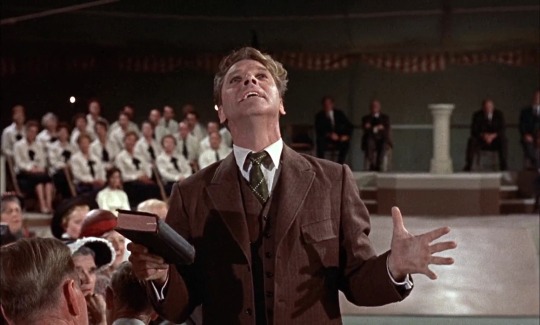
Elmer Gantry (1960)
Upon the publication Sinclair Lewis’ novel Elmer Gantry in 1927, an eruption of outrage ensued. The novel, a Juvenalian satire of evangelical Christianity in the United States, drew invectives from evangelical groups and high praise from literary circles. Despite its popularity among American readers, Elmer Gantry’s content long prevented American studio executives from even considering the film adaptation rights. The Motion Picture Association of America (MPAA), from 1934 until 1968, enforced the Hays Code, a guideline for censorship, on all films made by the major American studios for theatrical release. Here is what the Hays Code says on religion – this section was never amended for the entirety of the Code’s existence:
No film or episode may throw ridicule on any religious faith.
Ministers of religion in their character as ministers of religion should not be used as comic characters or as villains.
Ceremonies of any definite religion should be carefully and respectfully handled.
The 1960 film adaptation of Elmer Gantry, released by United Artists (UA), directed and written by Richard Brooks, and featuring one of Burt Lancaster’s most electric performances of his career, violates the second and third part of this section and, arguably, the first as well. By the late 1950s and early ‘60s, enforcement of the Code was beginning to wither – boundary-pushing non-American films (which were exempt from the Code), television, and evolving behavioral and cultural norms in the United States contributed to its eventual demise. One of the beneficiaries was undoubtedly Brooks, whose output around this time – including Blackboard Jungle (1955), The Professionals (1966), and In Cold Blood (1967) – reflects the relaxing standards of Hollywood’s self-imposed censorship. Of the films Brooks made in this period, Elmer Gantry might be the most complete, excoriating, and cinematic.
Elmer Gantry (Lancaster) is a garrulous, ruthless, and ambitious con man who invokes Scripture to hock whatever he is selling. His shtick is effective, as his energetic sermonizing tends to break down the resistance of most. One day, curious about a traveling evangelist tent show passing through town, he encounters Sister Sharon Falconer (Jean Simmons). Gantry, taken by Sister Sharon’s virginal piousness and her fairness, convinces Sister Sharon’s assistant, Sister Rachel (Patti Page), to join their traveling group. Sister Sharon is impressed by Gantry’s – or “Brother Gantry” – orations, and she adjusts her own sermons to complement his. Where Gantry decries the congregants as sinners, Sister Sharon promises salvation through repentance. As time passes, Gantry’s presence in this itinerant ministry becomes the talk of the Midwest and Great Plains. Sister Sharon and Gantry begin to attract new congregants and onlookers’ horror, alike. The sermons become increasingly theatrical, writes the cynical big-city newspaper reporter Jim Lefferts (Arthur Kennedy), who is torn by his admiration of Gantry’s façade and his revulsion for hucksterism. Meanwhile, sex worker Lulu Bains (Shirley Jones) – who once knew Gantry when he was aiming to become a minister – is about to make an unexpected reentry into his life.
Character actors round out the cast of this motion picture, including Dean Jagger as Sister Sharon’s manager, Bill Morgan; Edward Andrews as businessman George F. Babbitt; and John McIntire and Hugh Marlowe as two reverends. Rex Ingram (1936’s The Green Pastures, 1940’s The Thief of Bagdad) cameos in an uncredited appearance as the preacher of a black congregation.
Elmer Gantry never feels like a 146-minute movie, as it moves through its scenes with fervorous pace thanks to some excellent performances and crisp filmmaking (more on both later). Brooks’ adaptation covers less than a quarter of Sinclair Lewis’ novel – Lewis allows its plot to unfold over the course of several years – and takes liberties in deleting or rearranging characters and plot points to fit neatly in a movie adaptation. Like the novel itself, Brooks’ adaptation ends without clear moral or narrative resolution – albeit at an earlier point in the novel. The character of Lulu Bains does not reappear in Lewis’ novel until after the events depicted in the film. To provide Elmer Gantry, the character, with the immoral backstory lost on a moviegoer unfamiliar with the novel, Brooks integrates Lulu into this film adaptation. On a surface level, that appears to deprive Lulu of her own characterization, agency, and backstory, but Brooks allows the character (and Shirley Jones) the space to portray and develop her complicated feelings – a stew of trauma, bitterness, and love – for her current life station and towards Elmer Gantry.
Reverential low-angled shots from cinematographer John Alton (1951’s An American in Paris, 1958’s The Brothers Karamazov) during the revivals make Sister Sharon’s tent seem cavernous, a fabric cathedral without need of stained glass, marble statues, flying buttresses. Looking slightly upwards at Sister Sharon’s of Elmer’s faces (at times with a Dutch angle), the film elevates the two above the masses listening intently on what they have to say, imbuing their scenes with striking imagery that draws the viewer’s attention. The decision to shoot the film in the 1.66:1 screen aspect ratio – wider than the Academy standard, but not as much as the widescreen standard sweeping through American filmmaking at the time – constricts the audience’s peripheral vision, forcing one’s focus on the speaker’s body language, rather than any miscellaneous activity occurring behind or to the side of the speaker.
As for the speakers or, should we say, actors, there are stupendous performances across the ensemble. For his turn as the eponymous lead, Burt Lancaster, known for his vigorous performances, provides Elmer Gantry with vigor aplenty. Modeling his performance off of the behavior of baseball outfielder-turned-evangelist Billy Sunday, Lancaster struts around the tent during revival meetings, his upper body animated in conversation and salesmanship outside those meetings. Even in stillness, Lancaster’s physicality swaggers, brimming with euphoria – his most private moments abound in sexuality molded by what his character might call the love of God. Even Lancaster’s haircut appears to be defying gravity more than usual in Elmer Gantry. The sweat on his brow, within the 1:66:1 frame, feels as if it is about to seep through the camera. As he delivers his lines, Lancaster masters the complicated beat – accelerating with certain turns of phrases and strategic pauses for emphasis – and wildly varying volume of Elmer’s sermons. “Love is like the morning and the evening stars,” he intones as Gantry (that is his signature quote), somehow making us believe in such bromides and other simplifications he sells to the revival’s attendees.
Jean Simmons, as Sister Sharon Falconer, is a clear-eyed minister who nevertheless falls – or, perhaps, “seduced” – for Brother Elmer’s pontifications. In her own way, Sister Sharon Falconer is as ruthless as the man who wheedles his way into her company. Simmons, retaining her British accent, speaks like a patrician but, as Sister Sharon, reminds all that even the poor, the downtrodden, the sightless, the hard-of-hearing can know the munificence of Christ. So different is she from Gantry that when the latter begins to aggressively court her, the scene elicits squirms. Not because the scene is poorly acted, but that Simmons and Lancaster (with assistance from Brooks’ screenplay) have developed their characters so masterfully that Elmer’s pretense-free seduction feels straight from an Old Testament story that invariably incurs God’s wrath. Their characters convince themselves of their mutual love, even though Gantry is probably incapable of loving and Sister Sharon cannot view love outside how she might interpret it through the Bible.
In the aisles or the congregation’s peanut gallery are Arthur Kennedy and Shirley Jones. For Kennedy, as the reporter Jim Lefferts, this is a dress rehearsal for the similar but more biting role of Jackson Bentley in David Lean’s Lawrence of Arabia (1962). Like Bentley was to T.E. Lawrence, Lefferts views the work of Elmer Gantry and Sister Sharon with a cynical lens but, to some degree, each finds a professional need for the other. As Lulu, Shirley Jones crackles with a sexuality essentially nonexistent in American movies at this time. Upon Lulu’s introduction, she tells her fellow sex workers her past experiences with the minister now stealing newspaper headlines:
LULU BAINES: He got to howlin’ “Repent! Repent!” and I got to moanin’ “Save me! Save me!” and the first thing I know he rammed the fear of God into me so fast I never heard my old man’s footsteps!
With this suggestive language that would never have been tolerated by the MPAA a few years earlier, Jones delivers her lines with shamelessness, slightly colored by a modicum of romantic trauma that reveals itself later. Jones is not in Elmer Gantry long, but her presence, her character’s raw contradictions deepen the tragedies that seem to follow those entranced by a former seminary student now returning to preaching his idea of gospel.
youtube
André Previn’s unsettled score to Elmer Gantry leans heavily on brass dissonance and rhythmically complex string runs in the few instances where there is no dialogue or diegetic music. Though not used often, Previn’s music lays bare Gantry’s motivations of lust and profit, a man devoid of internal meaning and one who craves sensation. There are moments throughout the score where it seems like a Coplandesque Americana sound is begging to burst free. But Previn, more than capable of composing such music and considering the narrative to this adaptation, knows better than to let those tendencies escape. The raving strings and blaring brass bury melodicism, which is left for the jazzy interludes that accompany Lulu’s scenes (jazz at this time was considered scandalous by many Americans). Previn’s score might not suit those longing for free-flowing motifs, but the technical skill required to play, let alone accomplish the musical phrasing he intends, some of the passages he writes for Elmer Gantry are stunning.
Earlier in this write-up in reference to the Hays Code, I mentioned that Elmer Gantry villainizes and makes comic characters out of religious figures, in addition to portraying the events at Sister Sharon’s revivals as debauched, deceitful. But does Elmer Gantry “throw ridicule on… religious faith”? Probably not, although those who despise religious belief in and of itself might disagree. Given Sister Sharon’s modesty and her less-fiery diction early in the film, probably not. Brooks does not expand upon what Sister Sharon’s congregation looked or sounded like in the months of years before Elmer Gantry’s arrival. Instead, Brooks’ movie targets individuals seeking to make economic and personal empires of organized religion – and Elmer Gantry, whose ravenous pursuit for money and women, is the man to defile Sister Sharon’s ministry. Only once he ingratiates himself to Sister Sharon, Gantry begins to emphasize what sounds suspiciously close to the “prosperity gospel”, which broadly states that faith in God and religious donations will lead to material wealth and physical wellbeing. The prosperity gospel is not scriptural. But it is a central tenant of numerous evangelical traditions.
Like Oral Roberts, Billy Graham, and the Falwell family, Elmer Gantry is the byproduct of the United States’ Third Great Awakening, which also resulted in Prohibition and the State of Tennessee’s decision to prosecute John Thomas Scopes for teaching human evolution in a public school. Sinclair Lewis, like Richard Brooks and his cast for Elmer Gantry, warn of profiteering “prophets” that remain a fixture of American life. From the mid-1950s to the mid-‘60s, the major Hollywood studios were prioritizing epic movies such as Cecil B. DeMille’s The Ten Commandments (1956), William Wyler’s Ben-Hur (1959), and George Stevens’ The Greatest Story Ever Told (1965) – spectaculars intended to check the perceived threat of television to moviegoing. A film like Elmer Gantry that disparages religious ministers – even unethical, villainous ones – released during this time was nothing less than a landmark. Adapting a work by one of the great American writers of the twentieth century, Richard Brooks, with no small assistance from a cast topped by Burt Lancaster, results in a venomous film including one of the great characters of American film history. The book is almost a century old and the film is just past its sixtieth anniversary, but Elmer Gantry’s power endures. Elmer Gantry’s dialectic continues, even with evangelical Christianity akin to the homilies of Elmer Gantry supposedly on the wane.
My rating: 10/10
^ Based on my personal imdb rating. Elmer Gantry is the one hundred and sixty-fourth feature-length or short film I have rated a ten on imdb. My interpretation of that ratings system can be found in the “Ratings system” page on my blog (as of July 1, 2020, tumblr is not permitting certain posts with links to appear on tag pages, so I cannot provide the URL).
For more of my reviews tagged “My Movie Odyssey”, check out the tag of the same name on my blog.
#Elmer Gantry#Richard Brooks#Burt Lancaster#Jean Simmons#Arthur Kennedy#Shirley Jones#Dean Jagger#Patti Page#Edward Andrews#Sinclair Lewis#John Alton#Andre Previn#TCM#31 Days of Oscar#My Movie Odyssey
7 notes
·
View notes
Text
‘We all have Hoop Dreams’: Bittersweet tale of first 'reality TV show'
By Motez Bishara, May 4 2019 (CNN)
When Dwyane Wade was a 12-year-old shooting jumpers on the playgrounds of Chicago, a movie came out that would help navigate him through his future Hall of Fame career.
Released in 1994, "Hoop Dreams" shadowed the bumpy fortunes of Arthur Agee and William Gates, two inner-city Chicago youths dreaming of NBA stardom.
Wade's path to the Final Four with Marquette and championships with the Miami Heat would be lined with the same challenges faced by Agee and Gates, including the pressures of injury and young parenting, and the avoidance of drugs and gun violence.
Twenty-five years since its premier, "Hoop Dreams" still impacts Wade. "I watched it many times, and it resonated with me because we all have hoop dreams," the recently retired three-time NBA champion tells CNN.
"Growing up in Chicago you struggle," he adds, "I look at "Hoop Dreams" and I can see myself in those individuals at the time."
Film critics like the late Roger Ebert lauded the three-hour documentary for exposing a side of America rarely depicted at the time: A class system stacked against the poor, coinciding with rising corruption in youth basketball.
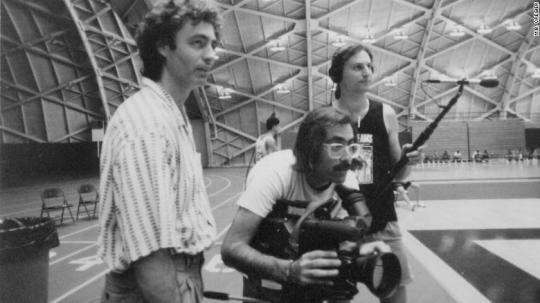
Filmmakers Steve James (left), Peter Gilbert (centre) and Fred Marx worked on a very thin budget until three years into "Hoop Dreams," when they were able to secure enough funding for the project.
So what has changed since then?
College basketball is coming off a thrilling season, but faces intense scrutiny as a second corruption trial involving shady figures and illicit payments around the sport unravels in court. Meanwhile, Agee and Gates remain close -- bonded not just by their fame from "Hoop Dreams," but two devastating murders in their families.
"You can't script this stuff," says Gates, 47, a youth basketball coach in San Antonio, Texas, to CNN. "Our stories continue to (overlap) like that, because he lost Bo and we lost Curtis."
Gates' brother Curtis, a former high school star who flamed out, and Agee's father Bo were both featured on screen. Curtis was shot in 2001, reportedly in a dispute over a woman, while Bo - whose redemption from crack addiction and jail time was a seminal part of the film - was killed in a robbery three years later.
"It was very heartbreaking," adds Agee, who still lives in the West Side of Chicago, not far from where he grew up. "It's so eerie that me and William always say "Hoop Dreams" was a gift and a curse, and we both lost people that played a big part of our lives.
"And then for both of us not to make the NBA, you know, that eeriness, that gift and a curse is there."
Though neither athlete played in the NBA, both received college scholarships -- no small feat coming from the dire housing projects they grew up in.
Agee, 46, who attended Arkansas State, went on to play professionally in the now-defunct USBL and had a stint with the Harlem Globetrotters. He then turned to acting, with small parts in a film and commercials.
Agee remains tied to "Hoop Dreams," which provides his motivational speaking platform in schools, and still inspires viewers to send warm messages from places as far off as Australia and China. He also sells apparel inspired by the film, including a throwback jersey from his school days.
Gates was the more heralded of the two, receiving interest from top college basketball programs and a grant to attend the prestigious St. Joseph's high school -- the same school that is shown releasing Agee, seemingly for not playing well enough as a freshman.
But Gates blew out his knee at 16, then rushed back to the court after surgery and re-injured it. Though he played at Marquette University, the injury crippled his pro potential.
"For me, it's bittersweet on many levels," says Gates about the film which he has not watched in over 16 years. "It was a constant reminder of what could have been and what didn't happen, and also a reminder that Curtis is no longer here to hear his voice."
Nevertheless, he looks back on "Hoop Dreams" as a "life turning situation," one that led to an allegiance with Michael Jordan, who invited him to pickup games before his comeback with the Washington Wizards. (An injury derailed Gates' own tryout with the Wizards, however.)
"It has opened doors," he says. "It has done things that I never thought would happen in my life."

Dwyane Wade is pictured dunking the ball.
THE FIRST REALITY SHOW
What began as a short film idea from director Steve James and producer Frederick Marx to shoot Chicago playground basketball in 1987 with a budget of $2,000 quickly took on greater ambitions.
The pair hired Peter Gilbert as a cinematographer (later added as a producer), and the trio followed Gates and Agee on and off for nearly five years. With 250 hours of footage to edit, the production took seven years in total, eventually raising the $750,000 necessary for completion.
When it was finally released in 1994, "Hoop Dreams" went viral, though the term had not yet been coined. It was nominated for best film editing at the Oscars, but snubbed for best documentary and picture, which had critics like Ebert up in arms.
"I've actually gotten way more mileage personally as a filmmaker out of not being nominated than I ever would have by getting nominated," says James, who stays in contact with Agee and Gates. "Over the years a lot more people seem to be upset on our behalf than I was personally."
By the time it ended its theatrical run, "Hoop Dreams" became the then-highest grossing documentary of all time, paving the way for hundreds of sports documentaries and streaming series currently on air.
"I call it the first reality show," says Gates. "I think it was groundbreaking."
Gates' enrollment in Marquette was mirrored exactly 10 years later by Wade, who also struggled to qualify academically for an NCAA scholarship and sat out his first year for academic reasons, the university confirmed.
Wade shared other similarities with both Agee and Gates, including feeling the pressure to rush back to action after knee injury which required surgery at Marquette. Though the operation was successful, Wade later said it led to complications as a pro.
"I watched it when I was at Marquette from a different (angle), knowing that (Gates) was staying in the same dorm that I was standing in," says Wade, who -- also like Gates -- was caring for a child (son Zaire) while in college.
Wade was separated from his mother Jolinda at a young age when she succumbed to drugs, leading to spells in jail. Like Agee's father Bo, she turned to religion after getting clean, now serving as a church minister.
"Obviously, I was able to make it," but there are challenges, he adds. "What I learned at the time is you learn a lot about other people sharing their story."

William Gates was a 17-year-old high school junior when his daughter Alicia was born.
CONTROLLED CORRUPTION
Rewatching "Hoop Dreams" 25 years later lends perspective to how fast top college recruits are forced to grow up, and how much is at stake early on.
Gates' daughter was born when he was 17, during his junior year of high school. Trying to be a father and student while rehabilitating from two knee surgeries to make it as the next Isiah Thomas -- the former St Joe's and NBA star who makes a cameo in the movie -- became too much to bear.
By the movie's final scene, with his passion for the game already waning, Gates remarks, "When somebody says, 'When you get to the NBA, don't forget about me,' I should say to them, 'Well if I don't make it, you don't forget about me."
It's no wonder he needed a break from the sport by his third year at Marquette.
"I didn't feel like a 19 or 20 year-old-kid, I felt like a kid who had been working 10 to 12 years at a job," Gates says, estimating that basketball practice and travel would take up to 60 hours a week in college. "I had a lot on my plate."
Agee had his own growing up to do, with his academics thrown into disarray after his brief spell at St Joe's, followed by Bo walking out and his mother Sheila losing her job.
In one scene, Sheila cannot pay her electricity bill and the family is left without power, while a clearly humiliated Agee broods at the camera.
(The filmmakers pitched in to get the power back on, leaving that detail out of the film. "We didn't want to look self-serving, but we felt an obligation to do that much for them," says James.)
Agee transferred to Marshall High, leading the team on an improbable city championship and state semifinal run.
In recent years the public high school has been rocked by gun violence, leaving seven former basketball players dead and two paralysed, including Agee's ex-teammate Shawn Harrington.
"I didn't let St. Joe's defeat me; I didn't let my neighbourhood and my environment pull me in to gain drugs, carrying the guns -- that whole lifestyle," Agee reflects.
It helped that the teenagers had the right people on their sides. Gates and Agee admit they were given cash during their basketball ascent by the likes of so-called street agents, drug dealers and university affiliates who often helped promising players.
In "Hoop Dreams" Agee pays for Air Jordan gear at a store with money received from drug pushers. While at Arkansas State, he says a "big street pharmacist" whose team he played for in a high school summer league bought him a car.
"That was part of the deal," says Gates of being offered gifts from universities as a highly touted recruit, before committing to Marquette. "It was like, 'Hey, you need anything let us know.' And you let them know and they took care of stuff.
"Hey I need transportation, hey I need clothes, I need shoes. They figured out how to get it to you," he says. "They did it through a friend of the program that you didn't even know was a friend of the program. That's the way it was."
In response, Marquette said it "is committed to the highest ethical standards for the recruitment and retention of our student-athletes," while Arkansas State said it had no knowledge of Agee's car purchase and that "there are too many unknown variables to comment further about a relationship from approximately 25 years ago."
Arthur Agee was recruited to play at St Joseph Arthur Agee was recruited to play at St Joseph's prep school as an eighth grader. A year later he was asked to leave, and his parents were billed for tuition they struggled to pay for.
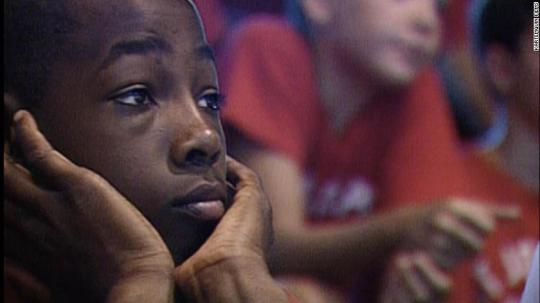
Arthur Agee was recruited to play at St Joseph's prep school as an eighth grader. A year later he was asked to leave, and his parents were billed for tuition they struggled to pay for.
Somewhat fittingly, Gates is now a full-time coach in the Amateur Athletic Union (AAU), the collection of summer leagues that insiders say has replaced high school basketball as the launching pad for college prospects.
Among the players that have passed through Team Hoop Dreams are all three of Gates' sons, William Jr., a recent graduate of Houston Baptist University, Jalon, a junior guard at Houston Baptist, and Marques, currently in high school.
AAU has come under fire by an ongoing FBI investigation involving sneaker companies funnelling money towards recruits to land at big university programs. The AAU told CNN it does not fund its teams, calling the situation an "apparel company scandal, not an AAU scandal."
"People are buying and selling players; it's a human trafficking market." says Michael Sokolove, author of "The Last Temptation of Rick Pitino," which sheds light on college basketball corruption.
Multiple federal investigations have led to guilty pleas from four college assistants on bribery charges, the conviction of an Adidas executive, and the firing of Pitino from Louisville.
Pitino maintains he had "no knowledge" of infractions during his tenure as Louisville's head coach. James Gatto, Adidas' former head of global sports marketing, is appealing his nine-month prison sentence for wire fraud and conspiracy charges in connection with a $100,000 offer to the father of a Louisville recruit.
With athletic wear companies paying hundreds of thousands of dollars to support top AAU programs, the potential to use them as a means to distribute money to the families of top players or an influential coach is high, says Sokolove.
"Some of this is laundered money. These teams can be used as pass through," he says, adding that the ultimate goal is to breed loyalty with players who become walking advertisements for the shoe companies on the court.
The stakes have become much higher to land top recruits like Gates was in the days of "Hoop Dreams," notes Sokolove. "There are more people with their hands in the cookie jar and the kids are largely pawns in this whole endeavour."
In 2017 the NCAA surpassed $1 billion in revenue, mostly through TV rights, while top players like Zion Williamson of Duke are limited to a compensation of tuition, room and board with a modest stipend.
Like many around the sport, Gates thinks college players need to get paid. He suggests universities contribute $100,000 towards a "graduation fund" for the player if he stays in school four years "to get prepared to live life."
Gates sees the current NBA age requirement of 19 as an obstacle towards paying black athletes, calling it a "controlled corruption" not seen in mostly white sports like baseball, tennis, golf or soccer.
"The two sports that are heavily dominated by African-Americans, it seems like there is always an issue when it comes to money," he says. (The NFL enforces a three-year rule before most college football players can turn pro.)
NCAA president Mark Emmert told the Associated Press this month that the organisation has "serious issues which require serious change," but paying players will remain unlikely.
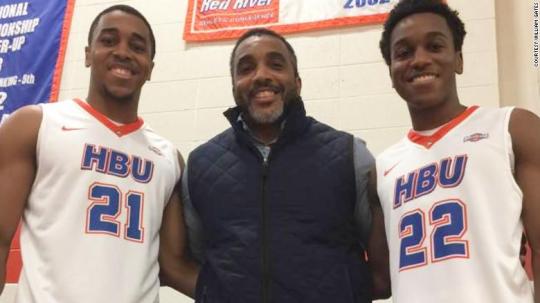
William Gates (centre) is now an AAU coach in Texas. His sons William Jr. (left) and Jalon played together at Houston Baptist University.
PART OF A BIGGER STORY
Coinciding with the movie's anniversary, Gates and his wife Catherine just celebrated their 25th year of marriage. The eldest of their four children Alicia, who was born during filming, is 30 and works as a dental hygienist.
For years Gates would not allow his sons to watch all of "Hoop Dreams," fearing the scenes of his injuries would spook them. He finally relented, though Will Jr underwent four knee procedures of his own in college.
Agee has fathered five children, with his youngest Devin a budding youth basketball player in his own right. Devin's mother Jennifer Genovesi stood by Agee in the wake of a 2017 arrest after a woman accused him of battery.
Agee was quick to call James -- who he refers to as an uncle -- to assure him of his innocence. The charges were dropped shortly afterward.
"I'm part of a bigger story in this film. I never want to bring any despair or negativity into the story," Agee says. "He was like, 'We'll get through it together,' and that was good as that."
"I feel like they know that I'm here for them," says James, the film's director.
The special bond between the parties involved in the film was reflected once "Hoop Dreams," which was never expected to be a commercial success, caught fire. In a highly unusual step, Agee and Gates were made equal partners by the producers.
"They weren't just filmmakers," says Agee. "They came in over a period of time and got to know me and my family, and then stayed in touch."
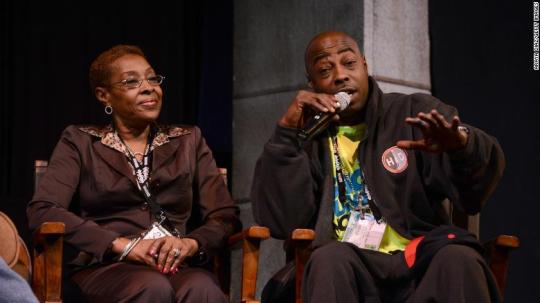
Arthur Agee bought his mother Sheila a house with royalties earned from "Hoop Dreams." He now uses the film as material for his job in motivational speaking.
Gates and Agee first received nearly $200,000 each, and Agee promptly brought his parents a four-bedroom house in a suburb.
His mother, Sheila Agee, who was seen at the end of the movie graduating tops in her nursing class, relocated to Alabama in the wake of Bo's death.
After Curtis' murder, Gates was given an unlikely last shot at the NBA at age 29 with a tryout with the Chicago Bulls. But bad luck struck again when he caught the flu on the day of the workout.
"I said maybe God doesn't want me to play basketball," he reflects. "That's when my ministry life began to open up."
Gates received his master's in biblical studies and worked as a pastor at the Cabrini Green housing project he grew up in before settling in Texas.
He is thankful that Curtis got to meet Jordan before he was killed -- another imprint tied to his fame from the film.
"What came along with that was the responsibility to teach, educate, be a friend, have some compassion and show some understanding," Gates says.
"I've been very honoured, privileged and grateful to be part of "Hoop Dreams," he reflects. "It's been super amazing to be a part of something that has withstood the test of time."
2 notes
·
View notes
Text
Magic, Monsters and Merthur - 1x03 - (Magic)
Been a while, hasn’t it?
Alright so I totally forgot to post the two other parts for this episode. I just put so much into the Merthur part that I... kind of got sick? Blergh, that was awful.
Magic is way more fun! A little recap.
Two prophecies for the world, we got the bad timeline. Magic is a living Being that blessed humans, but humans didn’t like that it didn’t give them god-like powers over all of nature, so they made their own blessings purely out of spite and they fought something that shouldn’t even be fight-able, or even like... physical, and won.
What the Episodes taught us.
1x01 - Teleportation is a thing, but is apparently complicated. Veil spells - covering ones form with a look that deceives human eyes, but not the world. Dragons were so fancy they re-purposed Druidspeak to turn it into Dragonspeak - a similarly echo-y way of communication. Imagine snapping your fingers to a tune and doing magic at the same time. A dream scenario, but nothing to confirm such an amazing possibility. Merlin is resistant to sleep magic, or in other words, enchantment magic (Stuff that puts people under a spell, different from amulets that put people under a spell.). Amulets can be shattered - they can break under a certain amount of force applied and the spells they were keeping alive break at the same time. Quite a useful way to render a sorcerer harmless.
1x02 - Human lives are not higher than those of animals - I refuse to accept anything else, and I made up a whole theory of how the Cup of Life doesn’t take lives, just life-force, which every living being has, to continue my theory. Which means that any life is worth another’s life, even a flower’s, and making dead material into living things is a trend that just keeps going.
Let’s see what bullshit the afanc can do!
<_><_><_>

<_><_><_>

00:40
(Wow thanks subtitles…)
Anyway if you’ve heard it, then you know it’s similar to what Merlin used to revive stone. So it’s the same spell with little variations depending on what material you’re using.
Apparently, I WAS A GODDAMN FOOL FOR THINKING THAT.
I was going to somehow find the spell that Nimueh used here and then put it through a translator to see what it meant, but some very dedicated people on the wiki have already done that for me.
Yes, there is a Merlin Wiki, there’s a wiki for everything but I was just shocked how much information it held on everything…
And… The only difference is Nimueh calls the afanc “ancient” or “old” and Merlin just skips that and tells the stone to wake up already (as you do).
It WOULD have been fun if there was ONE spell that made DEAD material ALIVE, but it CHANGED based on what MATERIAL you USED.
But no. Clay is more ancient than stone. That’s all.
*Writes this down on “Reasons I’m adding to the magic”*
<_><_><_>
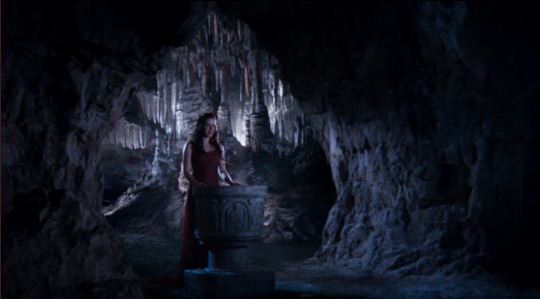
01:45
Those rocks look familiar.
Because of that… not even fact, I used to think that Nimueh was just hiding out in one of Camelot’s deepest caves, very far away so no one could find her. Dumb idea, but imagine how many creatures would reside in these caves if they really were that large? Unending magical creatures attacks from somewhere underneath Camelot and the knights having to storm some “stronghold” of the creatures – that’s a whole episode!
<_><_><_>
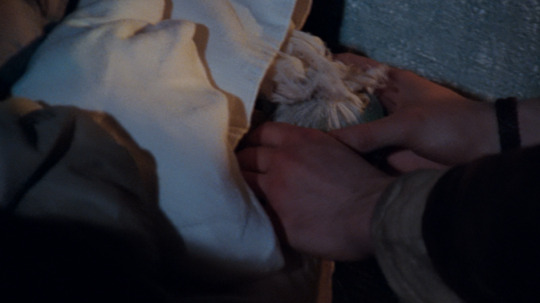
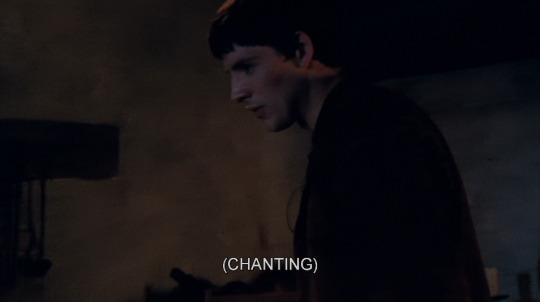
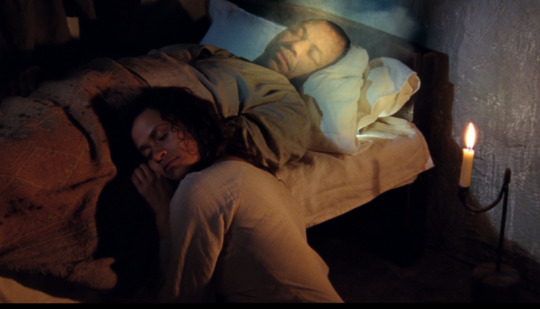
16:36
Yeah… I’m not gonna try to explain how the hell healing spells work. Mostly because… I’m not sure the sorcerers know themselves.
Are there magical herbs at all? Or are simple herbs given better healing qualities through the use of magic? Are the herbs there as a placebo and healing magic doesn’t need anything but the incantations that all other magic needs?
There is one type of healing magic that I CAN explain, but that’s… Oh boy that’s in another season, and only relevant there.
But does any of this matter, really? Should we just accept that spells are spells and leave it at that?
I wanna leave it at that. It’s way more fun just thinking of what ways those spells can be used.
(I know that the whole point of this part of the re-watch is to try and fill in the gaps that the show left, but... Spells and what they do have always been iffy for me. I don’t like them, I don’t even know why. I like “silent” spells, or magic that you can do without speaking, I actually have no good reason for why I like that more and hate spoken spells and spells with rituals and specific materials.
Oh wait I did say why I hate them... But who read that rant anyway?
Not me, apparently.)
<_><_><_>
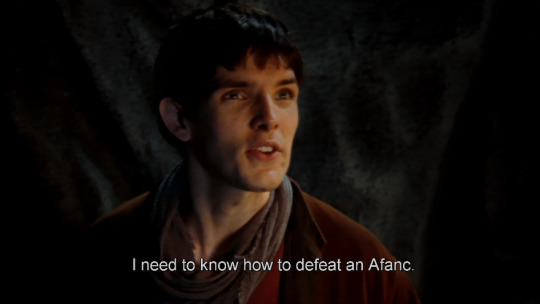
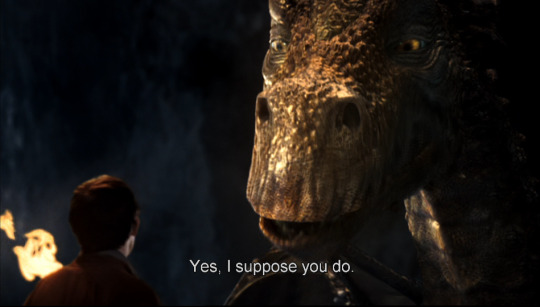
33:25
Oh no this line spiraled yet another theory.
This is taken from my “Too many reasons to hate Kilgharrah”, a book that I’m not sure when I’ll release since paper is scarce.
(I also think that everything Kilgharrah does is to somehow manipulate Merlin and get him to trust him.)
(Oh and assuming innocent and meaning-nothing lines have actually incredible meaning and are definitely hiding something is… The basis of this whole theory, I’m only staying in-character.)
***
Kilgharrah already knew of the afanc before Merlin came to him. Yes, you could say that Merlin hadn’t come to him before, so his advice on how to defeat it isn’t just another attempt to get the warlock to rely on him, but how did Kilgharrah know? If the dungeon he’s trapped in is connected to the other dungeons and the one Nimueh is doing her thing in, and the chain is long enough for him to reach and see her, why didn’t he call Merlin the moment he found out? A creature of his knowledge knows what the afanc does and he knows Camelot is in grave danger, what was he waiting for? For someone important to Merlin to die? Was he just petty and thought that half of Camelot getting destroyed was funny? What if it would have deterred Merlin further from him, make him leave Camelot, did this lizard really not think of that? Did he want Nimueh’s plan to succeed? Does Kilgharrah feel any kind of attachment to Nimueh? She is of the Old Religion. Maybe he feels that they are kin and he doesn’t wish for her plan to fail.
And if this has nothing to do with Nimueh at all and he doesn’t even know she still exists, then what reason would he have to withhold information? If he felt the afanc moving through the water, why didn’t call to Merlin and warn him? No excuse.
But when Merlin comes by, he has no choice. He tells him how to beat the afanc, but says nothing about Nimueh. He probably knows that she’s smart and she will see what Merlin is capable of and… who knows what she’ll attempt next.
Kilgharrah is willing to bet she doesn’t want to kill Merlin.
(ALSO MERLIN COULD HAVE KILLED THE AFANC HIMSELF, BUT OF COURSE, LET’S TRY TO HAMMER HOME THE IDEA THAT HIM AND ARTHUR ARE SUPPOSED TO BE WORKING TOGETHER EVEN MORE SO MERLIN COMES TO TERMS WITH THE IDEA THAT HE HAS TO BE A SERVANT ALL HIS LIFE.)
***
That bit about Nimueh being of the Old Religion and Kilgharrah sort of… being an accomplice of hers, it…
It made me think that the dragons and the Old Religion used to be connected.
And with how Kilgharrah manipulates Merlin and then how Nimueh is a slave to prophecies – that’s probably because the dragon told her of the prophecies.
I think that the dragons used to rule over the members of the Old Religion.
Why not, right> Dragons are powerful, they’re knowledgeable, why not turn a few puny humans to their side? It would help to know more things, and it would stroke their egos just a bit more.
I’ve literally no basis for this idea, but knowing that Dragonlords exist, it makes you think.
Why would dragons allow/need humans to speak to them? I honestly don’t think that Dragonlords are natural. Commanding dragons? Humans? What about eggs hatching? Why the fuck couldn’t an egg just… hatch like all other eggs do? How is a dragon’s soul equal to a human’s – the two don’t even have similar magic among them! Their bodies decay differently, their thinking is different, how can the two’s souls be considered brothers if the human part of the soul retains no memories of past reincarnations? It’s like it’s a new soul, and the thing that’s actually passed down after death (HOW COULD IT BE A SOUL THAT’S PASSED DOWN IF A PERSON WAS PERFECTLY FIND WITHOUT THIS QUESTIONABLE GIFT UP UNTIL THEIR FATHER DIED?) is just a type of magic. A very specific type of magic, that’s coded to only be passed down this way, and to work in the way that it’s described – a dragon’s soul is felt like that of a sibling’s.
I think… I think that Dragonlords were a thing created by the Old Religion sometime after dragons tried to rule over them. This caused the tables to turn, and suddenly the Old Religion had knowledge of the Draconic prophecies, which Nimueh actually seems to follow.
This is far-fetched, obviously. The two prophecy sets were far-fetched. But I’m nothing if not a stubborn believer in going big or going home.
And oh boy the documents of text for each episode each have like… 5k+ words. It doesn’t count the screencaps, otherwise, the character number would be in the hundred thousands.
I am not even halfway of going big.
<_><_><_>
35:25
So the afanc is a beast born of clay, needs considerable power to be conjured, and we all know Merlin has enough power to do that so the stone-resurrecting is not ooc. Exudes some sort of toxic waste from its body that drains the life force of everything that has any (which is everything, apart from non-organic stuff – includes glass, stone, rock that formed incredibly long ago and leather, etc.), but it takes a few days for it to finish what it starts in the first burst of draining. It is defeated by using fire and wind, the two of the four base elements the afanc isn’t made out of.
(We never heard of elements again though. There are some fire spells, but if this type of effective-against-one-weak-against-another thing is going on, then certain alchemy is conducted every time you cast these spells. Water extinguishes fire, fire eats up wind(oxygen), wind… erodes? Earth?, earth… Yeah no, it’s the other way around. Water extinguishes fire, fire scorches earth, earth… takes over wind? Doesn’t leave space for it to move? And air just carries water around so the little droplets get separated and can’t form something stronger. Yeah, that sounds better.
The other way around is empowering then, I guess. Or… making different elements? Wind picks up the earth, making it more impactful in the air current, earth… turns into… lava… because of the heat? Fire… makes water vapor? And water… gets inbetween the air and also makes it more impactful? I don’t know… NOT ENOUGH INFO DAMMIT. AND THAT’S SAYING SOMETHING SINCE I’VE SPUN AN ENTIRE NEW UNIVERSE FROM LIKE 2 EPISODES OF THIS SHIT. THIS IS DISAPPOINTING LEVELS OF LOW INFO.)
<_><_><_>
The Merthur
The Monster
#magic monsters and merthur#(magic)#merlin#arthur#gwen#morgana#uther#nimueh#1x03#mark of nimueh#how fun is this#reading rants#i bet its not too much fun#it seems that the further we go the more i can stretch everything#its good for me!#i like typing out stuff#but... i see that not many people like my ridiculous theories XD#ill get back to the merthur in a moment#maybe do episode 4 soon
2 notes
·
View notes
Note
Can we hear more about Jan?
Of course, anon! I’d be glad to yell a lot of information about the man who lists yelling as one of his hobbies.
And, without further ado, an introduction and character summary below.
Jan Kees Jones, personification of New York State

All art credited to @zapphi, 2017, 2018, 2019
Physical Description
Jan Kees is 5′11, with semi-styled sandy blonde hair, and blue-green eyes. He is of a medium build, and decently fit. He has been referred to as a shorter version of his father, Lars. Neither can deny relationship to the other. He identifies as Dutch-American. His birth year was 1614, and he celebrates his birthday on July 26th.
Jan Kee’s face claim is model Andrej Halasa, his voice claim is Gregg Taylor of Decoder Ring Theatre fame, and as of this moment, he has no singing voice claim.
Personality
Money makes the world go around, the world go around… (Me, starting this section).
Jan is a loud, somewhat egotistical bastard, whose got just enough of a hidden golden heart to be worth knowing, somehow. He’s really good with kids, passionate, and driven to do whatever he decides to do. His passion and drive can play against him at times when he comes off as stubborn and resistant to outside ideas, and aides in many negative perceptions of him. He can also be very indifferent at times to various situations, unless he has a direct stake in it, and pride is a very definite and major downfall he has.
At the same time, he believes strongly in family. While he probably fights with his two brothers more than anyone else, he’ll be right at their side the moment anyone else goes after them. And as for his family back in Europe, he considers himself still very close to his father, and visits him often. He’s also a little bit of a prankster, and he and Seth (@zapphi’s Massachusetts) have gotten into multiple prank wars.
Sexuality and Gender
Jan Kees is queer and cisgender. He has tried ascribing other names to his sexuality over the years, but it has been very fluid at times, so he prefers the overall term of queer. The closest he’s come to using any other name for his sexual orientation was bisexual, but he remained somewhat uncomfortable with the term before switching back to queer.
Jan can additionally be very open with his sexuality at times, and has historically been quite the womanizer and been willing to sleep with about anyone who lets him. When other states joke about the “Promiscusquad”, they count Jan Kees in as a founding member. However, if you’re in a serious relationship with him, he’s a one-person man.
Religion
Jan was raised as a Dutch protestant, and while he remains culturally Christian, indetifies as an agnostic or atheist nowadays. He is very aware of other cultures and religious practices, and tries to be very respectful of them, and has spent a lot of time studying Judaism in particular, as both his brothers are Jewish.
Employment
Jan has two fields in which he’s incredibly passionate and focused in, law and finance. Following World War Two, he has predominantly focused in law, although he continues to invest his money. He used to mainly making a living in finance, but after the Great Depression, felt that law was a more stable career.
Pets
Jan has three pets, all gifts from Lars to celebrate another century of age. In order, he recieved:
Niagara
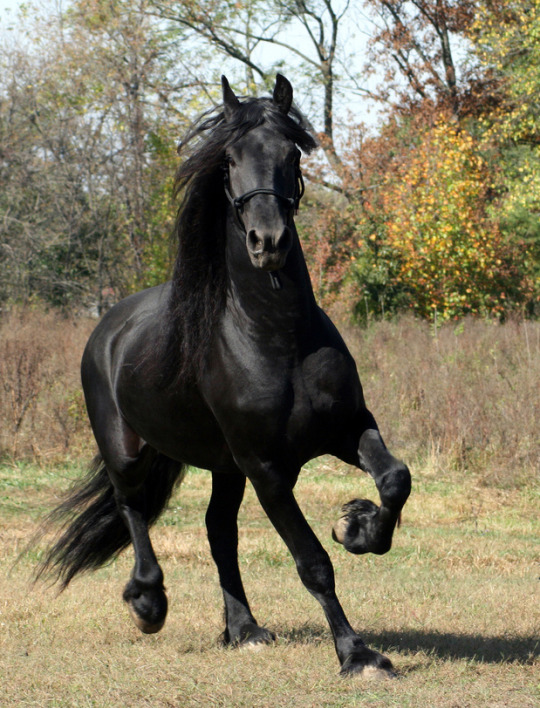
A Friesian mare Jan recieved on his 100th birthday, Niagara was a very practical gift. He was a growing colony, and although he was now a British colony, Lars felt he needed his own transportation and Arthur was failing to provide him it. Jan and Niagara were pretty inseperable until the age of the automobile. Nowadays, Niagara lives on Jan’s property in upstate New York and enjoys her well-deserved retirement.
Hamilton

A blue and white British Shorthair was given to Jan as his 200th birthday present, and named in honor of Alexander Hamilton. Jan is definitely more of a cat person than a dog person, and Hamilton can about get away with murder. He sleeps on Jan’s chest (which is bad when he weighs as much as he does), loves all of Jan’s “enemies” more than he loves Jan, and loves the smell of mint gum which Jan is sometimes forcefed so he won’t smoke.

Hamilton, you traitor, stop adoring Massachusetts.

When life gives you mint gum, Hamilton glues himself to your face.
Rembrandt

Rembrandt exists pretty much solely because of this picture of Jan’s faceclaim. Rembrandt was a gift for Jan’s 300th birthday, and Rembrandt the hedgehog is living the ideal life in Jan’s apartment. He crawls around on the floor as a walking pincushion, Hamilton is terrified of him and Jan’s terrified of stepping on him, he gets taken out for fun photoshoots by literally anyone who’s ever housesat for Jan so they can spam Jan with pics. His life is amazing.
After reiceiving Rembrandt, Jan has made it clear he has as many pets as he wants, so he didn’t recieve another pet for his 400th birthday in 2014.
Relationships with other States
We’ll start with family.
New Jersey

Elijah, only ten years younger than Jan, has never been someone whose content to be in the shadows OR bossed around by his older brother. Fiercely independent from the start, he resisted assimilation into a Dutch way of life, clinging to his native roots and converting to Judaism very early on. Half the time, they’re at the other’s throats over the smallest things. The other half of the time, they’re about the only person watching each other’s back. They’re a formidable team when cooperating, and Elijah admits he’d miss arguing with him if something happened to the asshole, but don’t you dare tell Jan that!
Delaware
No art for Aaron, so imagine Elijah, but approximately one inch shorter.
Aaron always felt a bit like the third wheel of the family, and he isn’t entirely wrong (Jan and Elijah can be rather self-centered at times). At the same time, Aaron serves as a peacekeeper between the two and he and Elijah bond over their shared faith.
Yet, some doubts about his place in the family were destroyed when Aaron came out of the closet as trans. Jan Kees and Elijah immediately stopped using Aaron’s deadname, Miriam, and bookended his seat for several meetings, ready to throw down with anyone who challenged Aaron. Jan Kees has even helped financially with some of Aaron’s surgeries and made sure his brother has all the expensive male fashion that he will probably never wear because “I never wore this sort of stuff before, Jan, why would I start now?”
Okay, family section over onto other states
Massachusetts

He’s only around eight inches taller than Seth, but this is what Seth thinks their height difference is. And honestly, Jan gloats over it, so he does too.
Seth Adams Jones and Jan Kees’ relationship with him is one of the most complicated things in Jan’s life. He can’t decide if he loves or hates the guy.

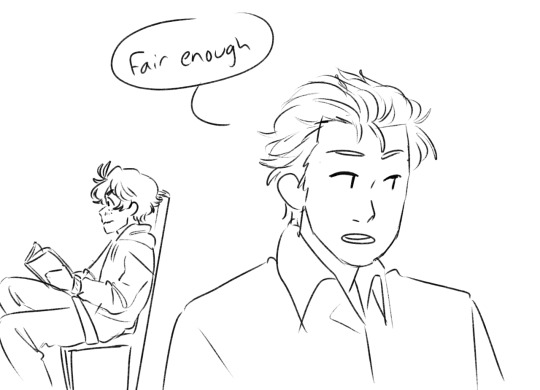

I’d like to thank Talia and also Talia for my life. -Jess
Jan Kees came into the original thirteen colonies in a lot of turmoil, and Seth didn’t help. Jan Kees had lost his only parental figure at the time, couldn’t speak much English, was a Dutch Protestant rather than a Puritan, and had Jewish younger siblings.
Needless to say, when one of the first memories you have of someone is getting into a fistfight with them for stealing your brother’s Magen David, you have gotten off on the wrong foot.
They eventually figured out some sort of antagonistic truce, and half-cooperated long enough to see themselves through the French-Indian War, and during the lead-up to the Revolution, Jan had a horrible realization, that he had a lot of feelings towards Seth. So in classic Protestant fashion, aka conceal, don’t feel, don’t let them know, he pretended those feelings didn’t exist. He went through the revolution as a spy for George Washington wishing that he was literally anywhere else doing anything else like maybe fighting with his crush by his side but also no I don’t have a crush on him God I’m a mess, help me.
Also, kinda awkward when your crush mistakes you for an actual redcoat and shoots you at one point when you’re trying to bring in your spy reports.
Jan’s crush remained pretty steady until after the Civil War, when it slowly began to fade over the next fifty years (in canon, Jan ends up dating @bottot‘s Florida, Marco). However, in many AUs, it just keeps simmering in this idiot forever until eventually, somehow, it slips out.
They continue to have a semi-antagonistic friendship, because really to Jan, is it worth knowing someone if they aren’t at least a bit of a fucking bastard? (He says, crawling out of the Boston Harbor for the sixteenth time this year after Seth threw him in.)
And, when times are tough, they can set aside the bullshit and be there for each other. Because you’re my oldest frenemy, damn it, I need you to help get me through this.

Michigan

Ever end up as the primary mentor of a kid who thankfully ends up nothing like you? That’s Jan Kees and Fatima in a nutshell. Fatima had been around for a while as a very small and sometimes struggling personification, but when the Erie Canal opened, so did a whole new world of settlement from the northeastern states, and trade, with New York being the center of it.
Jan served as a primary contact between Fatima and the world for a while, and even bought her her first translation of the Quran when she admitted to being curious about Islam. But in some ways, most importantly to her, he introduced her to Elijah. She and New Jersey somehow hit it off, even with totally opposite personalities, and now she’s practically his sister-in-law, so at least she tolerates his bullshit really well.
Florida

This just in: The moment Elijah realizes Jan Kees liked Marco, he had Jan’s type in men pegged to a T.
Marco is a bitter old salt whose approach to life is “Fuck it, if it doesn’t kill me, it’ll be something I can tell stories about later”. Full of salt, short, and ready to argue with anyone who will let him, he and Jan have interactions eeirly similar to some of Jan and Seth’s interactions.
But Marco also has a way of bringing out the kid in Jan again, making him do ridiculous things and actually having him enjoy it. Finally having their first proper meeting right after the Civil War, they were pretty wary of each other at first, but over time, a begrudging respect formed, followed by begruding affection.
They might not admit it, but they’d literally cross a war zone for each other.
At the same time, they have some things in their relationship that are a little explosive and tense. Marco is jealous of several other states who had short-term relationships with Jan since he used to be very promicious, and can hover a little too much in Jan’s space at times because of that. Meanwhile, Jan can be overprotective and stifle Marco with good intentions and concerns. But they’ll eventually set aside the argument, talk it out, and then go to bed together that night, with Hamilton and Pink treating them as their own private heating pads installed on the mattress.
In the end, they’ll never get used to the other’s weather, but they’ll never stop enduring the heat/cold to see each other either. They’ve both waited long enough to have something good like this, and they’re both too stubborn to let go.
Other States-Brief Thoughts
Vermont- Jackass. Rarely calls Ethan by name, since he fought so damn hard to be Vermont.
Rest of the NE besides Vermont and Massachusetts- Eh, assholes, but I’ll live.
Pennslyvania- Is this actually food or are you poisoning me?
Virginia- Oh, fuck off, you got the capital, but I’ve got the banks.
California- Stealing your money, power, glory, and fame since 1849.
Oregon- Feral tree child.
Washington State- Attractive. Slept with her a few times after WW2. Got threatened by Roberto for it. In retrospect, California was probably right but still. Ouch.
Kansas- Yeah, the appropriate way to get over your crush on Massachusetts probably isn’t to sleep with the girl he considers his daughter. Funnily enough, she ends up dating Washington State later, so that happened.
RANDOM FACTS
-In the Statetalia Canon I’ve created, Jan Kees is the Original Yankee because England misheard his name as Yankee. He referred to Jan as this until Jan knew enough English to correct him.
-He ran away to Canada in 1940 and joined the Canadian Army in response to the invasion of the Netherlands and continued US inaction. Alfred didn’t know until Matthew sent him a telegram that basically said “Yeah, I have custody of New York until the war’s over, bye!”
-Sports team rivalries are his life. I, Jess, know nothing about sports.
-Speaks Dutch, Iriquios, Yiddish, Spanish, Italian, Quebecios French, Mandarin, and English.
-Major insomniac, has no really well established circadian rhythm.
-A really good cook, actually! Too bad he prefers to order take-out.
#Anonymous#aph new york#hws new york#oc jan#ask hipsofsteel#you ask for ze boy and i deliver (eventually) ze boy
14 notes
·
View notes